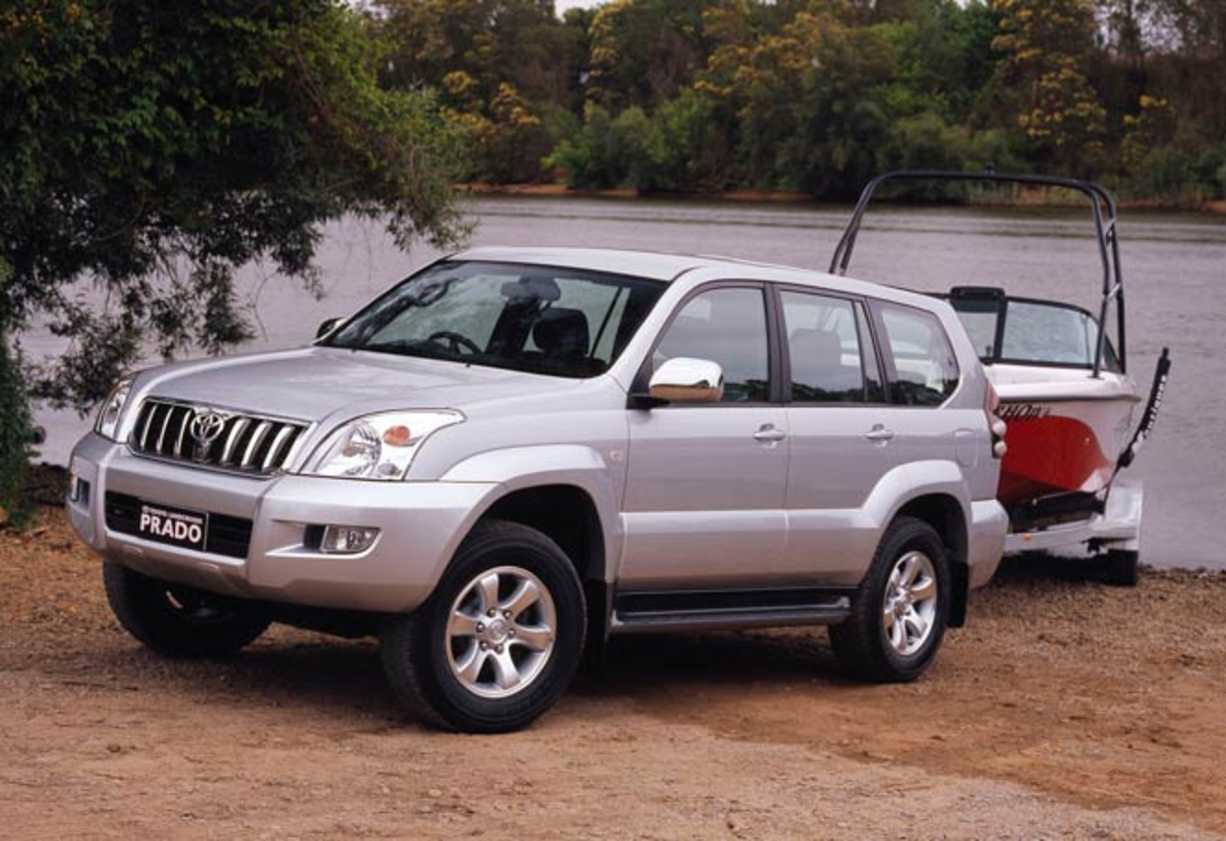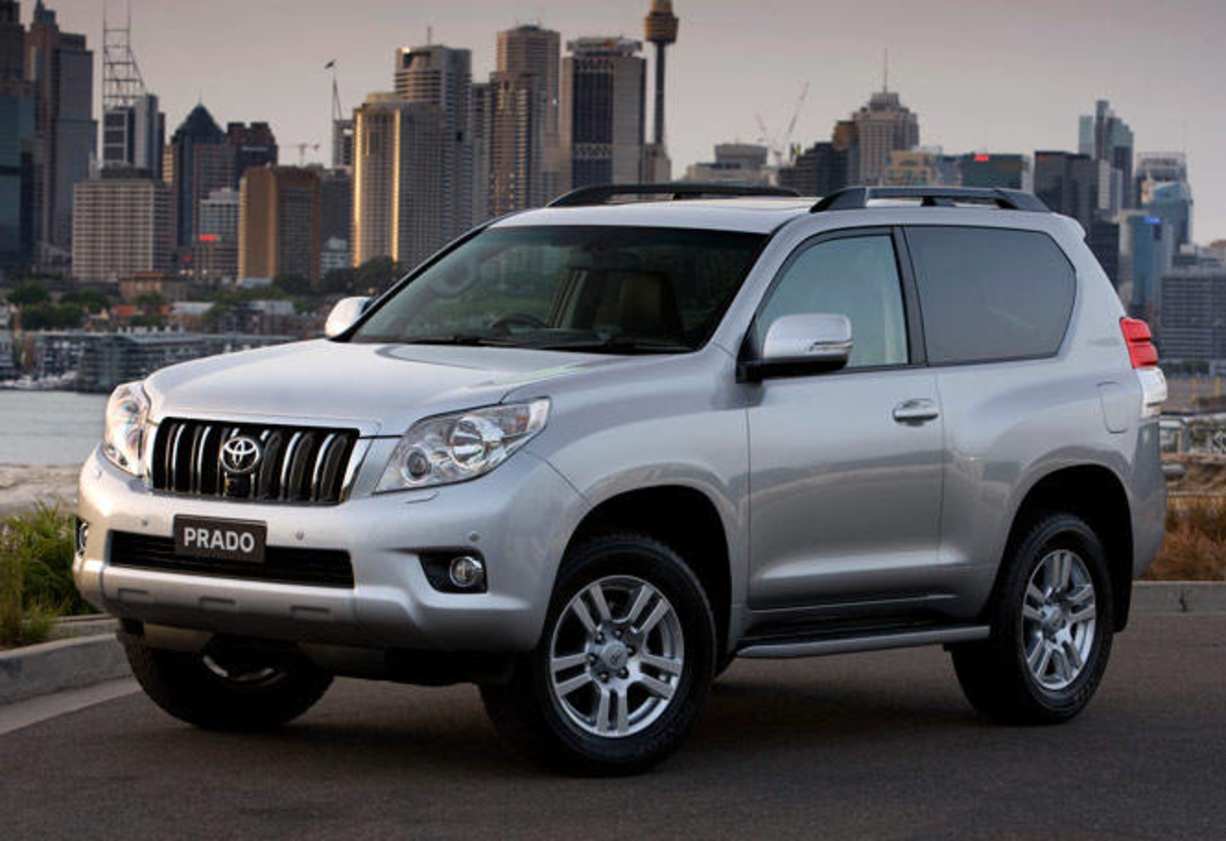A sensible cross between a full-on 4WD and a passenger carrying SUV, the Toyota Prado is built by the Japanese company that’s now in its sixth decade in the off-road field in Australia. Prado is almost as capable in heavy-duty off-road work as its big brother LandCruiser, but provides better comfort and handling than the Cruiser.
Not a lot better mind you, these Toyotas are nowhere near the same class as the big SUVs from Audi, BMW and Mercedes in the on-road dynamic stakes. Parking can be a problem until you get used to the bulk of the big Toyota so people moving from small cars to a big SUV may take a while to come to grips with the feel.
The Toyota Prado was launched in Australia midway through 1996 came with permanent four-wheel drive, something that wasn’t common at that time. The advantage of four-wheel-drive on sealed roads really comes into play in wet weather, so it's a useful safety feature.
From day one the Prado carved out a solid niche in the recreational 4WD market. It got a minor makeover for 2000 and the original series (which was actually the second generation Prado – the first generation wasn’t sold in Australia) was superseded in February 2003 to be replaced by a virtually all-new model.
That Prado lasted till November 2009, when the fourth-generation was introduced. It’s usually tagged as a 2010 model year if you're buying it, though if you have one and are trading it in you may find the dealer pointing at the build plate and offering you a 2009 price. Prior to the 2010 model, Toyota Prado was sold only as a five-door station wagon. It had either five seats or eight.
The 2010 Prado was the first to be officially sold in Australia in three-door format. Some three-door Prados have been privately imported before then. Spare body parts could prove a real headache for Australian owners. Also in the 2010 model the Prado five-door became a seven-seater, previously it had been an eight-seater. That was to make for a better passenger/luggage compromise and people who have owned both bodies say they really do prefer the seven-seat arrangement. Then again, anyone with a family of eight may disagree...
Prado power initially came from a choice between two petrol engines: a 2.7-litre four-cylinder and a 3.4-litre V6. The Prado V6 petrol powerplant went up to 4.0 litres with the release of the new 2003 models. This engine also had a relatively sophisticated valve-timing system to improve torque and reduce consumption. A 3.0-litre, four-cylinder, turbo-diesel option arrived in March 2000 and immediately grabbed a big slice of the sales. The 4.0-litre engine continued into the 2010 series Prado, albeit with many updates to further improve its driveability, performance and sheer grunt. There was an emphasis on low fuel use - low consumption for a big 4WD that is.
Though the diesel engine is more economical, many owners love the smoothness and responsiveness of the big Toyota petrol V6s. Transmission choices were five-speed manual and a four-speed electronic automatic in both petrol and diesel variants until September 2004, then five-speed automatics began to appear with the V6 petrol engines. It was a couple of years before the five-speed reached the diesel-automatic. Toyota is well represented just about everywhere in Australia that there's civilisation – and in plenty of places civilisation has barely reached.
Spares and repairs are usually readily available, though if you're in the distant outback you may have to wait for unusual parts to be delivered. As there's plenty of underbonnet space, it's possible to do a fair bit of your own servicing and some minor repairs on a Prado. But, as always, don’t do anything that can affect safety. Insurance is usually towards the lower end of the premium scale for an imported vehicle, and we don’t see any major differences in charges between the big insurers. If you want a Prado-sized vehicle but don’t want to go off-road then Toyota can offer you the Kluger, the Japanese-Australian company really does have this market segment well and truly covered.
WHAT TO LOOK FOR
If you suspect a Prado has been off road, check underneath its body for signs of damage to the chassis, door sills, protection plates and the bumper lower corners. All are signs of heavy-duty use. Even gentle off-road running can lead to scratches on the doors, guards and exterior mirrors because it has been squeezed through tight spots. Get under a Prado and look for sand. If you find any, taste it for salt – indicating the Prado may have been body surfing, something that can lead to rust if any of the body protection has been breached.
Check the engine starts easily, idles well (the fours can be comparatively rough due to their big capacity) and it doesn’t hesitate when accelerated hard, even when cold. The diesel is a modern unit and unless the weather is very cold it will start almost as quickly as a petrol engine. Be sure that all manual gearchanges are smooth and quiet and that an automatic don't hunt up and down through the gears when you feel it should remain in the one ratio.
Listen for any untoward noises from the differentials, driveshafts and wheel hubs. During the test drive find some decent sized bumps and potholes (a rough sealed road will suffice, but a bush track is better) and thump the Prado over them. Feel and listen for body movement as it hits them. Some is normal, too much is a bad sign. Look over the interior, particularly the back seat as kids can do horrible things to cars.
CAR BUYING TIP
4WDs that go off-road are a rarity in Australia, but Toyota Prados can be an exception to this rule. If you do find one either pass it up, or make sure you can get it for a good price.
Toyota Landcruiser Prado 2005: Grande (4X4)
| Engine Type | Diesel Turbo 4, 3.0L |
|---|---|
| Fuel Type | Diesel |
| Fuel Efficiency | 12.6L/100km (combined) |
| Seating | 8 |
| Price From | $17,820 - $22,550 |
Pricing Guides















.jpg)


.png)

